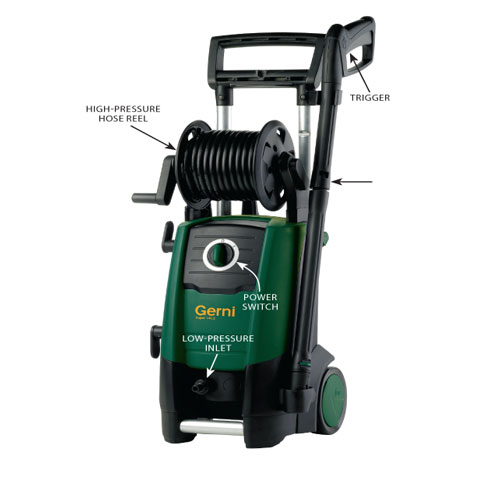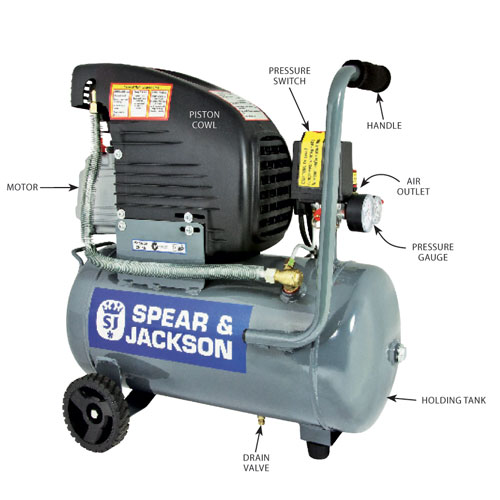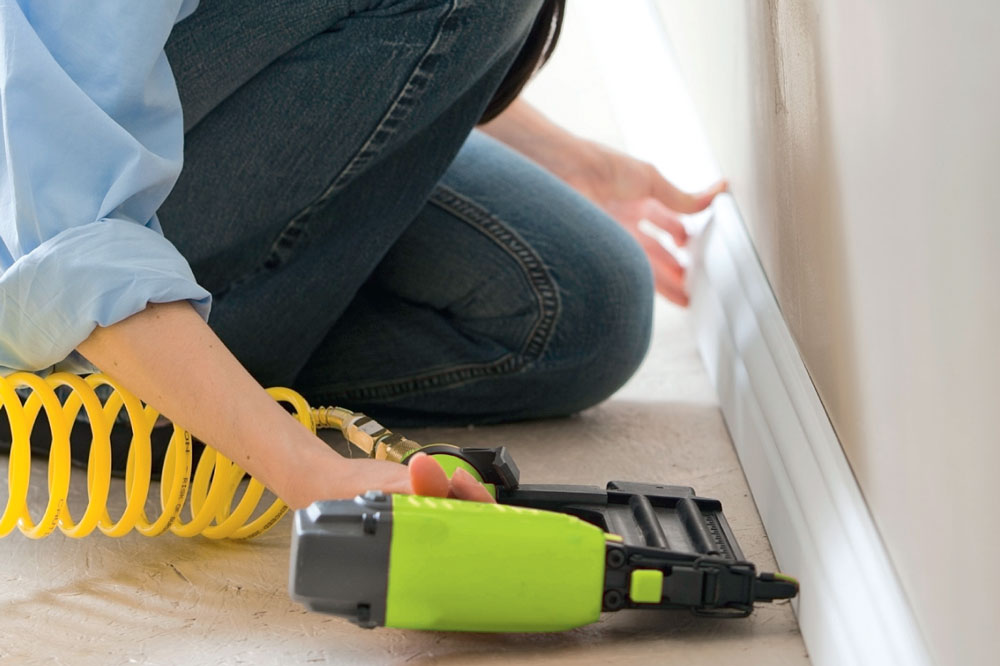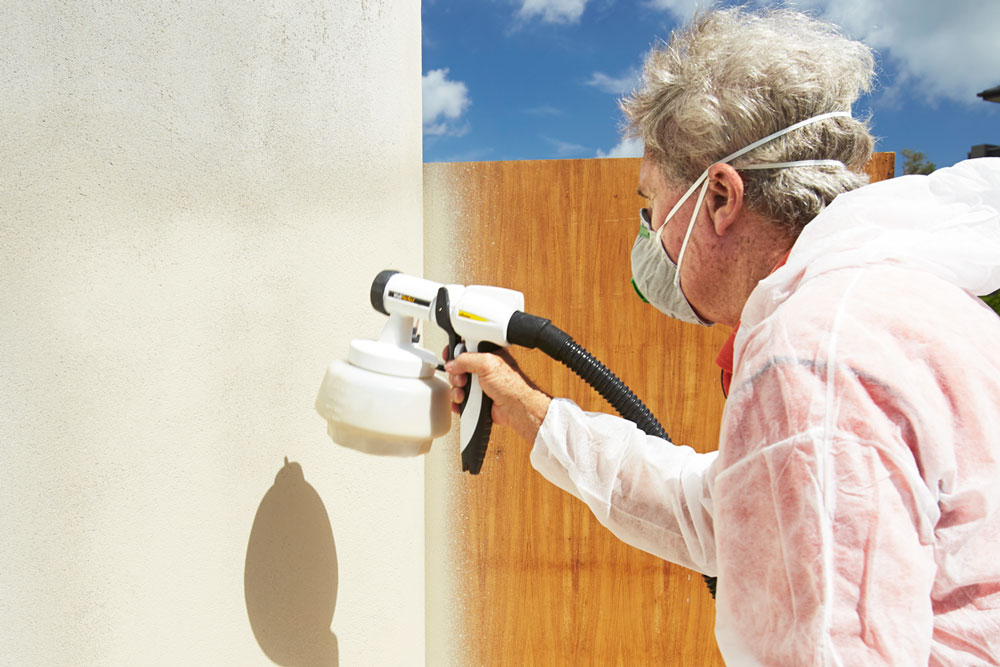
Whether you’re a DIYer or tradie, there’s an enormous range of paint sprayers, pressure washers and air compressors to suit your needs.
According to Handyman Technical editor Frank Gardner, these tools are designed for use with a variety of attachments.
‘This makes them suitable for highly specialised jobs, from driving nails into timber to cleaning the underside of a car,’ says Frank.
Easy Maintenance
These handy tools are great time-savers for any job, whether it’s cleaning a driveway, painting the shed or topping up a tyre.
PRESSURE WASHERS are ideal for almost any major cleaning project outdoors and are available in both electric and petrol-powered models.
AIR COMPRESSORS are essential for the garage or workshop, and use a flexible hose to power attachments such as nailguns and impact drivers.
PAINT SPRAYERS take the hard work out of painting projects, applying paint up to three times more quickly than by brush.
Pressure washers
Pressure washers are usually supplied with water from a garden tap or water tank. The flow rate is up to 80 less than that of an ordinary hose, but the pressure is more than 30 times higher.
They work by pumping water through a flexible hose and out of a nozzle in a spray lance or other attachment. The more pressure the pump can generate, the tougher the cleaning jobs the washer can tackle.
Petrol vs electric
Petrol-powered pressure washers are generally much more powerful and can supply more pressure, measured in pounds per square inch, or psi, than electric models.
Ideal for large cleaning jobs such as decks, driveways and roofs, they don’t need an electrical power outlet or extension lead.
They are more durable and require less care to use as the pressure can be regulated to avoid damage on smaller jobs. They can deliver up to 3000psi.
Electric pressure washers are often cheaper, lighter, quieter and smaller. They are used for tasks such as cleaning the car, motorbike or barbecue, and typically deliver 1300 to 2000psi.

Pressure washers are ideal for large cleaning jobs such as decks, driveways and roofs
Accessories
Stock up with everything you need to make the most of your pressure washer, from nozzles that offer different spray patterns to extension lances and hoses to supply the pump with water from a garden tap or rainwater tank.
FOAM NOZZLE allows you to mix detergent into the water jet for more effective cleaning.
POWERSPEED NOZZLE is 70 more efficient than a standard nozzle for general cleaning.
WATER SUCTION KIT is for emptying ponds or drying flooded areas.
UNDER-CAR CLEANER easily removes mud and sludge from the car chassis.
MULTI SPRAY LANCE lets you select from five spray patterns.
CAR WASHING BRUSH to scrub dirt and grime away from problem areas.
EXTENSION LANCE telescopes out to 4m, allowing you to clean hard-to-reach areas.
WATER FILTER protects the pump by purifying potentially dirty water drawn from a bucket.
SUPPLY HOSE draws water for the pressure pump from a bucket or rainwater tank up to 5m away.
Air compressors
Air compressors are machines that store pressurised air to power pneumatic tools such as nailguns, staplers, impact wrenches and paint sprayers.
Tradies use them for framing and roofing while DIYers employ them in home improvement projects and lighter applications such as inflating tyres, toys and sporting equipment.
Most have a holding tank filled with air that’s compressed by a motor-driven pump. The air flows through a flexible hose to power whatever tool is attached.
A regulator keeps outgoing air at a consistent pressure, while an automatic switch activates the motor to compress more air as it is used, turning it off again at peak pressure.

DIYers use air compressors for lighter applications such as inflating tyres, toys and sporting equipment.
Buying an air compressor
Compressors complying with the Compressed Air Association of Australasia (CAAA) Protocol 2000 have a label with pump displacement details and free air delivery figures.
This lets you easily compare different models without having to do complicated calculations. Entry-level air compressors are often 12V types that plug into the car cigarette lighter jack.
If you use pneumatic tools often, choose an oil-lubricated compressor that has enough free air delivery, measured in litres per minute, to drive the tools you plan to use.
Nailguns, sprayers and other tools have different requirements so match the air tool’s consumption to the compressor’s output.
Choose a compressor with 30 more output than the tool with the highest flow rate so you have some headroom to spare.

An air-powered nailgun is an invaluable tool for renovations. Images: Getty Images
Attachments
Air-driven tools are lightweight but powerful, as the energy that does the work is supplied by the compressor, so an onboard electric motor is not needed. They are also safer than mains-powered tools as there is no risk of electrocution.
GRINDER for welding preparation, deburring and cutting metal.
TYRE INFLATOR for pumping up tyres, air beds and sports balls.
BLOW GUN for targeted cleaning and regulating air pressure.
RACHET for rapidly loosening or tightening nuts and bolts.
BRAD GUN AND NAILGUN for building cabinetry, fencing and construction with timber.
IMPACT WRENCH impact wrench for car wheel nuts and other heavy-duty applications.
STAPLER for driving staples into timber or metal, used in construction and upholstery.
SANDER for fast and easy surface preparation.
SPRAY GUN AND AIRBRUSH for painting all types of surfaces and for car detailing.
Paint sprayers
If painting is a task you dread, or if using a paintbrush and roller seems like a slow and arduous way to apply finish, consider spray painting.
A power paint sprayer is a fast way of achieving good coverage and gives a consistent, uniform finish.
Great for painting both interior and exterior surfaces, power paint sprayers are particularly handy when trying to paint textured, hard-to-reach or intricate areas.
Save time by spray painting cladding, fencing, lattice, decking, grilles, furniture and even toys.
With the variety of paint sprayers available, it’s easy to choose one designed specifically for the type of project you need to accomplish.
HVLP sprayers
High Volume Low Pressure (HVLP) sprayers, also called air sprayers, disperse a mist of paint suspended in a large quantity of air.
An HVLP sprayer provides smooth, glossy and consistent cover, giving the user maximum control. Paint normally needs to be diluted as specified by a viscosity table in the user manual.
Airless spray guns
Larger projects are better suited to an airless sprayer. Airless sprayers use high pressure, provided by a pump, rather than air, to disperse the paint.
Some airless sprayers draw paint directly from the tin, eliminating the need to reload a reservoir. They are perfect for walls, exterior cladding, fences and any larger outdoor project.
Spray paint a wall
Spray painting is the quickest way to coat a wall or ceiling. An HVLP gun is a good choice for interior walls as it produces less overspray than an airless sprayer, so it doesn’t waste paint.
The air pressure is supplied by a small onboard compressor, or a portable turbine carried on a shoulder strap and connected to the gun by a flexible hose.


